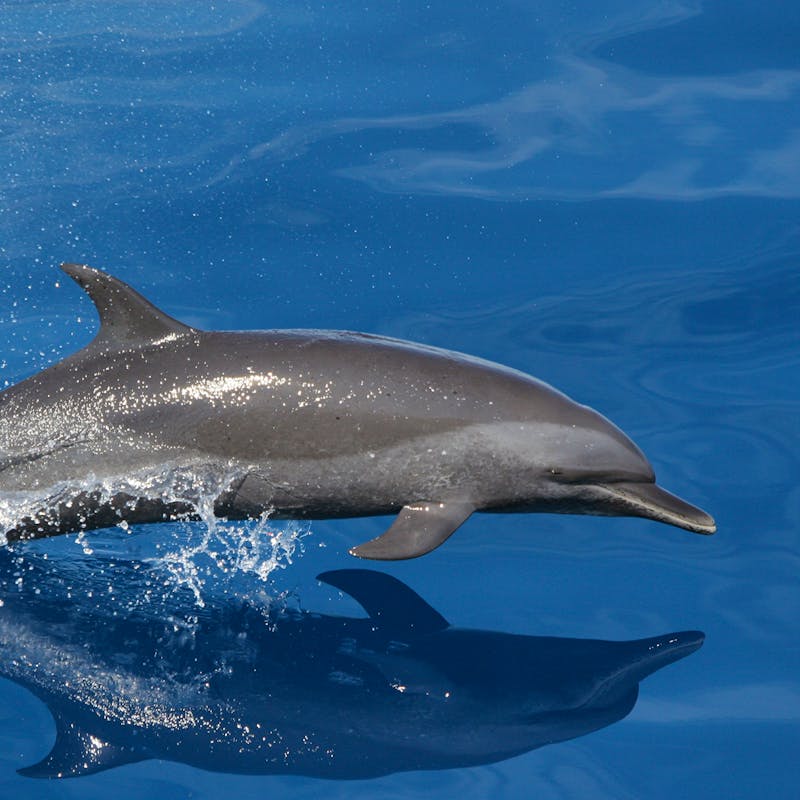Juan Carlos Cantu, Mexico Program Manager
An incredible animal with an incredible story, the Pacific loggerhead sea turtle will face many challenges throughout its life. From the day it is born, it enters the vast waters of the Pacific Ocean and travels thousands of lonely miles as it struggles to reach adulthood, return to the place it was born and continue the circle of life. Despite the perils of such a journey, the most severe threat these animals now face is humans.
The Northern Pacific loggerhead sea turtle nests on the coasts of Japan, where it can lay approximately 95 to 150 eggs. After 56 to 80 days, the nestlings hatch and enter the cold Japanese waters to start one of the most amazing journeys of any living species. Their goal is to cross the Pacific Ocean to arrive at the rich feeding grounds off the Pacific coast of Baja California Sur in Mexico. The origins of this migration are a mystery, but the reality is that these small loggerhead sea turtles must travel 7,500 miles of open sea to reach their destination. This is an immense body of water for the little turtles to swim, and the trip can take up to six years. By the time they arrive in Baja, those that survive are no longer small hatchlings, but fairly large juveniles. They spend the next 10 years in Mexican waters, where they feed mostly on crustaceans called pelagic red crabs in a relatively small area in front of the Bay of Ulloa.
Slow to grow and mature, even at 15 to 20 years of age, loggerheads are still considered subadults when they begin their journey back across the Pacific. They will roam the Northern Pacific until they reach their reproductive age, then swim back to the beaches in Japan where they were born and start a new cycle of nesting. The round trip takes decades to complete, and the adult sea turtles will never leave these waters to traverse the Pacific Ocean again.
Unfortunately, the number of nesting females in Japan has decreased by 90 percent in the past three generations, which qualifies this loggerhead population as critically endangered. The main culprit is “bycatch” — the unintentional capture of sea turtles in fisheries.

Fishing nets (Credit: Garry Knight)
In the waters off Japan, loggerhead sea turtles fall prey to massive nets, while in the open ocean the threat comes from the international longline fleet, which consists of fishing lines dozens of miles long, each with thousands of hanging hooks. Drift net fisheries (huge, miles-long nets that capture everything in their path) and gillnet fishers in the Pacific also have high bycatch of loggerheads. The National Marine Fisheries Service has noted that just 37 to 92 North Pacific loggerheads killed each year through bycatch would increase the species’ risk of extinction. In Mexico, these sea turtles are even more vulnerable to bycatch because they gather in such small areas to feed. Coastal fisheries in Baja, which mainly target shark and halibut, are capturing a staggering 1,000 loggerheads every year.
For years, teams of NGOs and scientists tried to convince fishermen to use alternative fishing gear and modify their fishing practices. Defenders of Wildlife helped this effort by producing materials like posters and even comic books with information on how to help sea turtles. Eventually these efforts started to pay off — fishermen were changing their fishing practices voluntarily, and bycatch was being reduced. Unfortunately, a recent seasonal ban on shark fishing prompted fishermen to start using their old methods on other species to increase their total catch, and as a result, bycatch has skyrocketed.
Bycatch alone is not illegal because it is not intentional. The problem here in Mexico is that the loggerheads’ feeding areas have little protection, and there are no regulations that mandate the use of alternative fishing gear or practices to reduce bycatch or in any way limit the number of sea turtles that can legally be caught as bycatch. For years, we worked to develop shark fishery regulations that include provisions to decrease sea turtle bycatch in Mexican waters, and in 2007, these were finally published in the official register. These regulations included a ban on drift nets and all surface nets, as well as mandatory use of circle hooks in surface longlines, which have been shown to be very successful in decreasing sea turtle bycatch and mortality. These efforts have helped, but since many Baja coastal fisheries use bottom-set longlines and gillnets, which invariably drown sea turtles, it has not been enough.

Loggerhead Sea Turtle (Photo: NOAA)
At the same time, Defenders joined an effort by local and international NGOs and research scientists to request that the Environment Ministry create a refuge area to protect loggerheads in their feeding grounds. For the past five years, environmental authorities have dragged their feet on this issue, with never-ending stakeholder meetings that resulted in no protected area, and no regulation of the different types of coastal fisheries that are negatively impacting the loggerhead population. This year, bycatch increased by 600 percent, making it the highest bycatch rate of loggerheads in the world.
We have denounced this unnecessary mass mortality, publicly demanding that government institutions, which are obliged by law to protect endangered species, take action immediately to put a stop to this loggerhead massacre. The response from the authorities was swift, promising to increase vigilance of fishery activities as well as confirming that a draft refuge area decree is in the works, but we haven’t seen anything yet.
On December 1st, a completely new administration took over, and we are hopeful that this may be the break loggerhead turtles need to finally get some real protection in place. We’ll keep you posted on what happens, and we will not stop until the North Pacific loggerhead population in Mexican waters has the protection it needs to survive.




